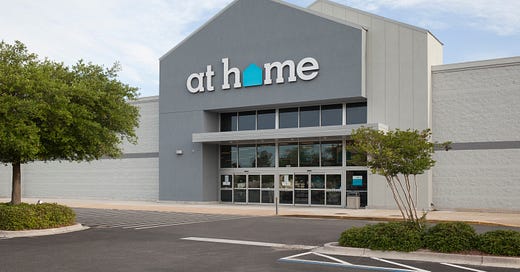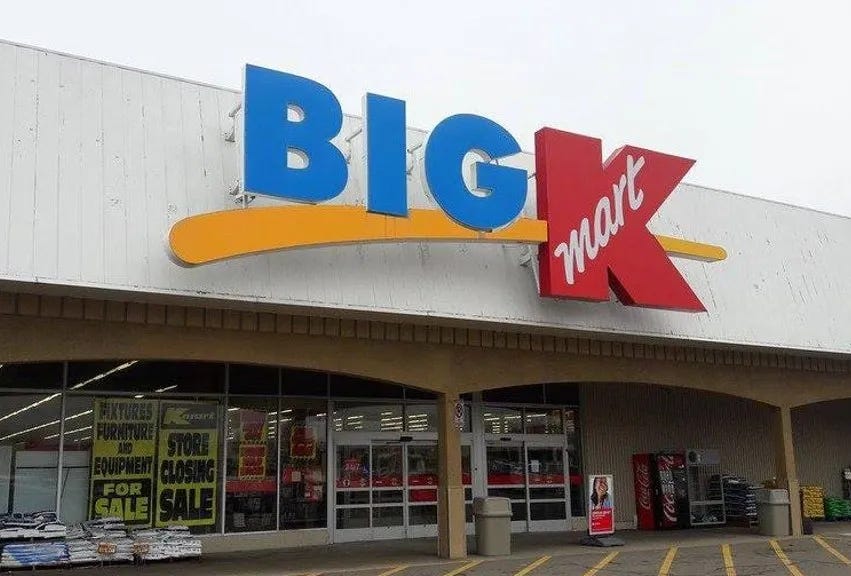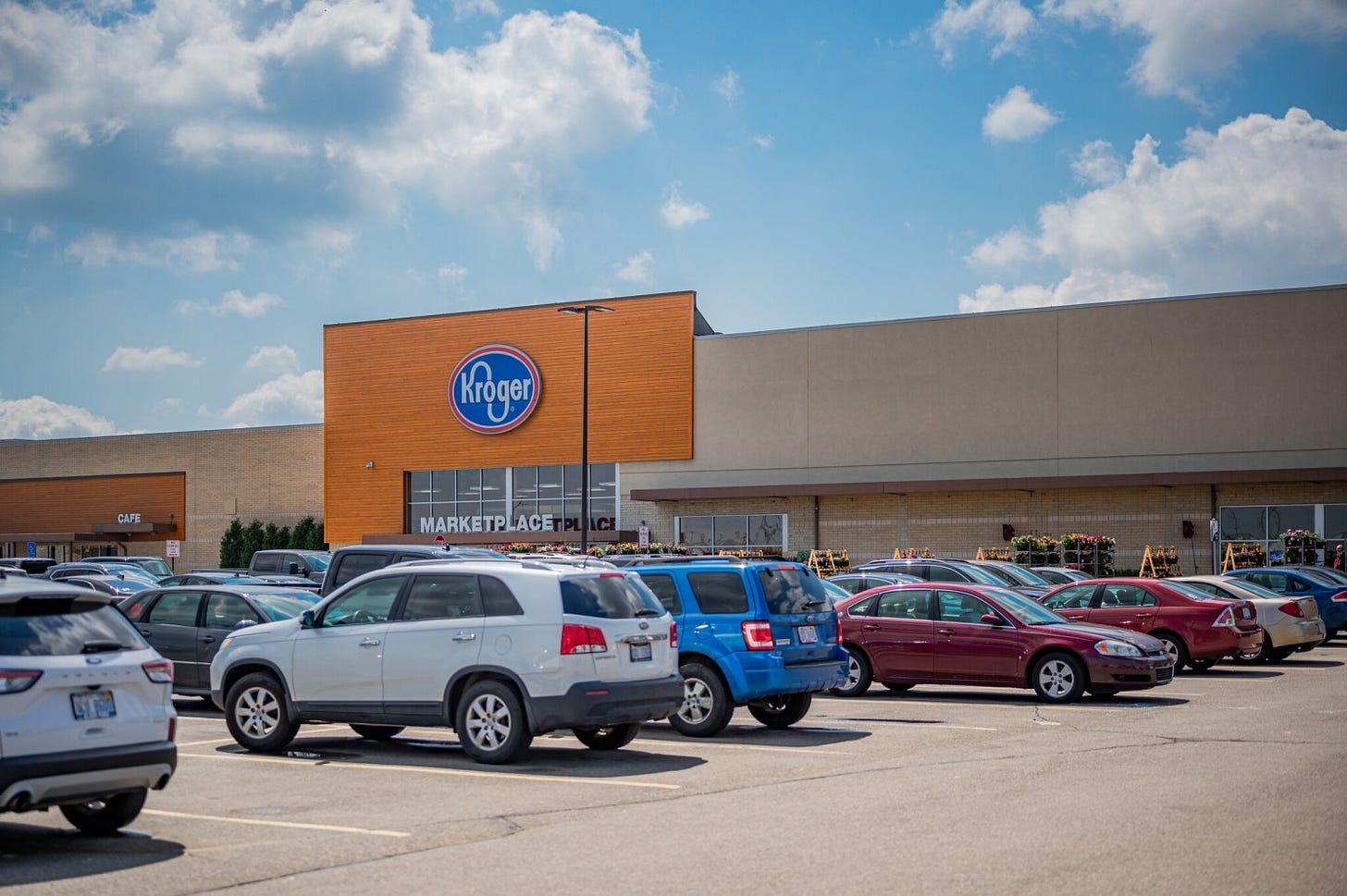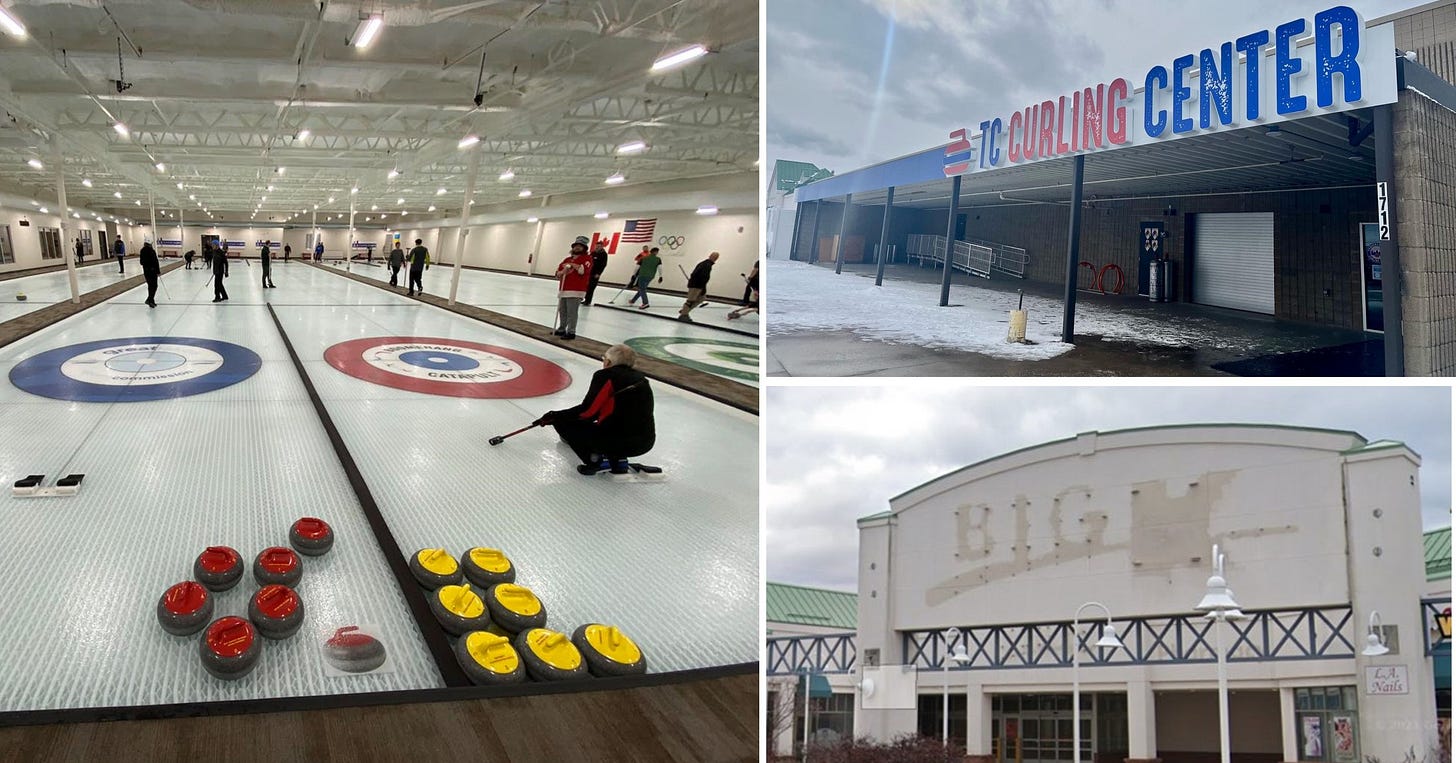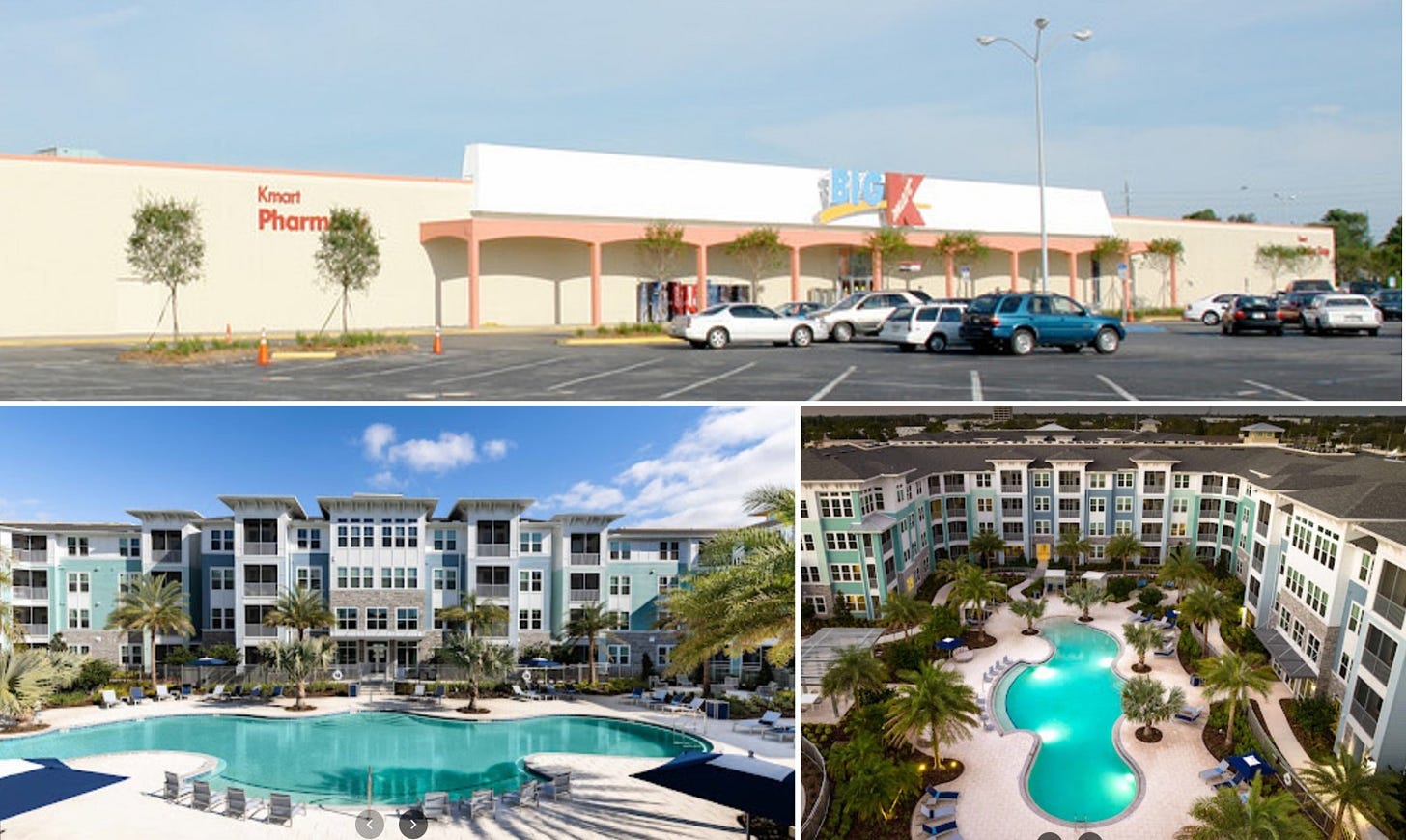Big Box Retailer At Home Is Bankrupt —What Will Happen To Its Real Estate?
~260 At Home stores may close now that the Big Box home goods retailer has filed for bankruptcy; the repurpose of former Kmart sites offer examples of what might be next for the At Home real estate
Big Box home goods retailer At Home is now bankrupt.
Although initial plans call for it to close just 26 stores, At Home’s remaining 234 stores are also at risk of closure if the Company fails to emerge from Chapter 11 bankruptcy protection.
So what could be next for the At Home real estate?
Most of the Company’s stores are at least 100,000 square feet, or 4-5x the size of a typical Big Box building.
The majority of At Home stores are already located in “2nd generation” space, or real estate that was previously vacated by other retailers.
Including of one former retailer in particular:
Kmart.
At least 80 At Home stores are located in former Kmart buildings.
Including some that are still owned by Transformco, the successor entity to Kmart parent Sears Holdings Corporation’s 2018 bankruptcy filing and one of At Home’s top 10 unsecured creditors.
In many instances At Home backfilled the former Kmart space with few changes or improvements to the building.
So if At Home were to close some—or all—of its stores while in bankruptcy, the repurpose of other former Kmart properties offer examples of what might be next for the real estate.
Kmart opened its first store in Garden City, Michigan in 1962.
Over the next four decades Kmart constructed or acquired close to 3,000 stores.
The stores were large—they averaged 100,000 square feet—and located in urban, suburban and rural areas throughout the country.
Kmart opened its last new store in 2002.
In the 20+ years since, Kmart filed for bankruptcy (twice) and closed thousands of stores.
Today only a single Kmart store operates in the United States.
That Kmart is located in the former garden center of what was once a ~107,000 square foot, full size store in Miami that had opened in 1977.
But a few years ago Kmart downsized to make way for another tenant to take the balance of the former Kmart space:
At Home.
So what happened to the ~3,000 Kmart stores that closed over the past few decades and the ~300 MM (!) square feet of vacant real estate that was left behind?
Many retailers moved in to fill the void that Kmart left in many communities:
For instance, Big Lots, Tractor Supply, and Hobby Lobby each now operate over 100 stores in parts of former Kmart buildings that have been remodeled and demised to accommodate multiple tenants.
Burlington Stores operates in a portion of ~90 former Kmart buildings and Ollie’s Bargain Outlet now operates at over 50 sites. Former Kmart sites comprise ~10% of the entire current store base for these two retailers — and, according to Burlington’s CEO. represent some of its best stores.
Home Depot now operates stores at ~80 former Kmart sites throughout the country. Home Depot demolished the Kmart building at about half of these sites and built a new store on the premises. At other sites it modified and reused the Kmart building.
Target now operates at over 60 former Kmart sites and Lowes has a store at over 50 properties. Kohls and Kroger have also each taken over 45 ex-Kmart sites. In many cases these retailers have re-used all or part of the original building.
There are also plenty of non-retail uses at many former Kmart properties:
Portions of over 200 former Kmarts are now used as gyms and fitness centers (more than half of which are Planet Fitness franchise locations);
At least 45 Kmart buildings have been converted to churches. Another 40+ are now used as schools, career academies and vocational centers;
Over 200 Kmart properties are now used for self storage. U-Haul alone has converted over 115 of former Kmart sites to a storage use.
There have been noteworthy medical redevelopments at former Kmart sites as well.
Our firm—Grand Sakwa Properties—redeveloped a former Kmart property in the Detroit suburb of Plymouth Township for a health care use.
Although the Kmart building was demolished, Henry Ford Health constructed in its place a 120,000 square foot, multi-story medical center that offers primary care, specialty services, and a 24/7 emergency room.
Grand Sakwa also densified the site by constructing a ~10,000 square foot convenience retail center at the hard corner of the ~9 acre property.
There have also been unique conversions and adaptive re-uses of former Kmart properties.
Like the former Kmart in Traverse City, Michigan that was repurposed as the Traverse City Curling Center, complete with multiple curling sheets and an insulated “ice shed” system that supports and maintains dedicated curling ice at the property.
And a former Kmart in North Hollywood, California that was converted into a Tesla Showroom and Service Center.
Tesla is using all 117,000 square feet of the Kmart building for a collision center, paint booths and an indoor area dedicated to car delivery and customer pickup.
Close to one-fifth of the ~3,000 original Kmart buildings were demolished.
Many of these former Kmart sites were redeveloped — some for other retail but at least 20 former Kmart properties now feature housing as a primary use.
Like a former Kmart site in St. Petersburg, Florida that was redeveloped into The Addison Skyway Marina, a 306 unit apartment complex.
While some Kmart sites still remain vacant, the vast majority have been repurposed or redeveloped.
This bodes well for the reuse potential of properties that At Home is vacating.
And, perhaps, for the many “repurposers” of former Kmart buildings that seeking additional real estate to re-tenant or redevelop.

